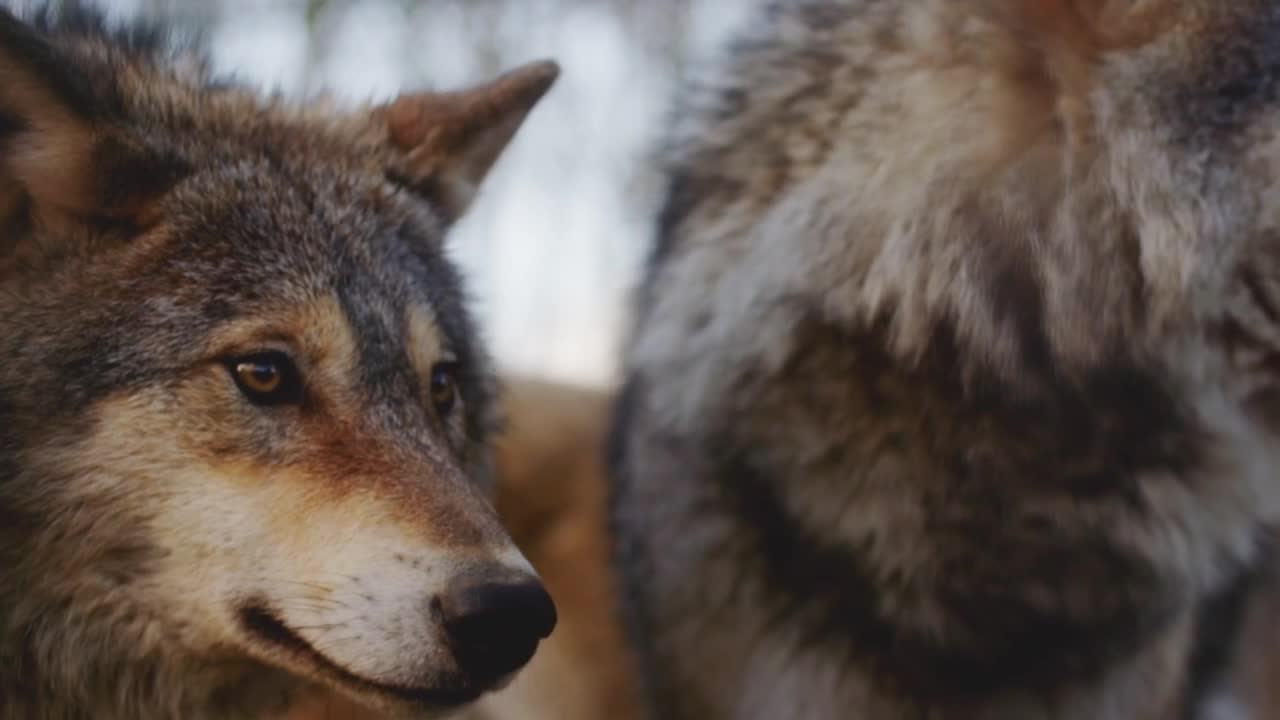GREAT FALLS - A Lewis & Clark County District Court judge issued a temporary restraining order on Tuesday that affects some of Montana’s wolf hunting and trapping regulations.
The changes go into effect immediately.
According to a news release from Montana Fish, Wildlife and Parks, the changes outlined in the temporary restraining order are as follows:
- Reinstitutes wolf management units (WMU) 110, 313, and 316 as they existed in the 2020 wolf regulations. WMU 110 borders Glacier National Park and WMUs 313 and 316 are north of Yellowstone National Park
- Reinstitutes the quotas for WMU 110, 313, 316 as they existed in the 2020 wolf regulations, which are two wolves in WMU 110 and one wolf each in WMU 313 and 316. Currently, one wolf has been harvested in WMU 313 and no wolves have been harvested in WMU 316 and 110. Wolf hunting and trapping in WMU 313 is now closed.
- Restricts all hunters and trappers to harvesting five wolves total per person, per season.
- Prohibits the use of snares as a legal method of take for trapping wolves.
FWP will make legal arguments in this case at a hearing scheduled for November 28. The court has set the temporary restraining order to expire on November 29.
“We have a healthy and stable population of wolves in Montana,” said FWP Director Hank Worsech. “We’ve proven we can manage wolves across the state and will continue to do so. We will comply with the judge’s order and look forward to the opportunity to defend good science and management strategies.”
The lawsuit, filed by conservation groups — Project Coyote and WildEarth Guardians — is not supported by all Montanans.
Trina Bradley is the executive director of the Rocky Mountain Front Ranchlands Group. The non-profit group which was formed in 2021 provides support for Rocky Mountain Front ranchers. Her focus is helping livestock producers deal with predators and she says there are a few ways wolves impact ranching operations.
"There's the direct losses that we have to wolves like livestock being killed, livestock guardian dogs being killed. The other issues we have are the indirect losses so there's the stress on the cattle, they don't eat as well, they don't reproduce as well as they should because they are stressed all the time, they don't utilize their pastures as well. Wolves are a giant headache for livestock producers"
Farmers and ranchers often work long hours, with little time to hunt. Bradley explained, "Without the efforts of hunters and trappers, or without them being allowed to go remove these wolves. There's that many more wolves on the landscape that these producers are having to deal with. Unlike grizzly bears, wolves do not hibernate so this is a 365 days a year issue."
Trina Bradley hired a range rider for 3 producers on the Rocky Mountain Front this summer. The range rider aids in keeping predators away from livestock. His two biggest predators were grizzlies and wolves. The livestock producers had 100% return on all of their calves from summer pastures and she says that is a first for all of them.
Michelle Lute, the Carnivore Conservation Director with Project Coyote and daughter of 3 generations of farmers, says a stable wolf population does not suggest an increase in conflict.
"More biodiversity is helpful to all of us, particularly farmers that are growing our food. It is actually really beneficial to keep wolves alive and lethal control does nothing to prevent conflict from happening. An increase or even a stable wolf population does not correlate to an increasing conflict."
Lute says the goal of their legal fight is not only the protection of wolves but also the cascading effect's on Montana's ecosystems.
"When you take that apex predator out of the system, that top-down regulation changes and that changes prey behavior. It over browses riparian areas and results in changes all the way down to water quality."
According to Lute, there are very few instances where wolf populations are stable at ecologically effective densities due to exploitation and hunting.
The non-profit aims to use science-based evidence to inform Montana's wolf management and policy.
Lizzy Pennock, a Carnivore Coexistence Advocate with WildEarth Guardians, is a lawyer-advocate supporting the case against FWP, the State of Montana and the Fish and Wildlife Association later this month.
"We're claiming that they violated the Montana Administrative Procedure Act and the Montana Constitution. They effectively amended the 2002 wolf management plan to allow the use of a new population model without putting that through public participation," Pennock explained.
She says the state of Montana never updated the 2002 wolf management plan when it is required to be reviewed every five years. The groups argue that Montana's constitutional right to a clean and healthy environment includes wildlife.
Throughout the 2021 wolf hunting season, 25 Yellowstone wolves were killed, including 19 in Montana.
"The National Park Service is governed by the National Parks Organic Act, which essentially requires the National Park Service to manage for a level of preserving wildlife. If wildlife can't survive and thrive in our national parks, where can they?" Pennock said.
The plaintiffs argue that the way the Montana Legislature has handled this interferes with the National Park Service's ability to carry out its legal obligation.
Pennock says the claims are similar against other land managers, the Bureau of Land Management and the Forest Service, and they argue that their legal obligations to manage viable wildlife population are preempted by the state's allowing of wolf hunting and trapping on federal lands.



